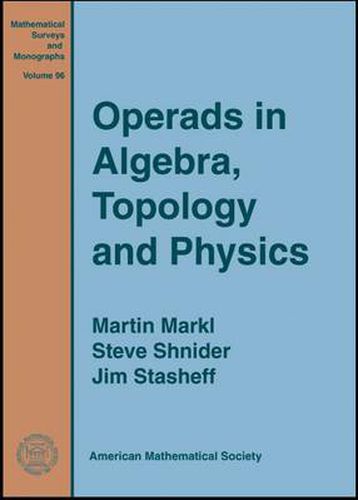Readings Newsletter
Become a Readings Member to make your shopping experience even easier.
Sign in or sign up for free!
You’re not far away from qualifying for FREE standard shipping within Australia
You’ve qualified for FREE standard shipping within Australia
The cart is loading…






‘Operads are powerful tools, and this is the book in which to read about them’ -
Bulletin of the London Mathematical Society . Operads are mathematical devices that describe algebraic structures of many varieties and in various categories. Operads are particularly important in categories with a good notion of ‘homotopy’, where they play a key role in organizing hierarchies of higher homotopies. Significant examples from algebraic topology first appeared in the sixties, although the formal definition and appropriate generality were not forged until the seventies. In the nineties, a renaissance and further development of the theory were inspired by the discovery of new relationships with graph cohomology, representation theory, algebraic geometry, derived categories, Morse theory, symplectic and contact geometry, combinatorics, knot theory, moduli spaces, cyclic cohomology, and, last but not least, theoretical physics, especially string field theory and deformation quantization. The book contains a detailed and comprehensive historical introduction describing the development of operad theory from the initial period when it was a rather specialized tool in homotopy theory to the present when operads have a wide range of applications in algebra, topology, and mathematical physics. Many results and applications currently scattered in the literature are brought together here along with new results and insights. The basic definitions and constructions are carefully explained and include many details not found in any of the standard literature.
$9.00 standard shipping within Australia
FREE standard shipping within Australia for orders over $100.00
Express & International shipping calculated at checkout
‘Operads are powerful tools, and this is the book in which to read about them’ -
Bulletin of the London Mathematical Society . Operads are mathematical devices that describe algebraic structures of many varieties and in various categories. Operads are particularly important in categories with a good notion of ‘homotopy’, where they play a key role in organizing hierarchies of higher homotopies. Significant examples from algebraic topology first appeared in the sixties, although the formal definition and appropriate generality were not forged until the seventies. In the nineties, a renaissance and further development of the theory were inspired by the discovery of new relationships with graph cohomology, representation theory, algebraic geometry, derived categories, Morse theory, symplectic and contact geometry, combinatorics, knot theory, moduli spaces, cyclic cohomology, and, last but not least, theoretical physics, especially string field theory and deformation quantization. The book contains a detailed and comprehensive historical introduction describing the development of operad theory from the initial period when it was a rather specialized tool in homotopy theory to the present when operads have a wide range of applications in algebra, topology, and mathematical physics. Many results and applications currently scattered in the literature are brought together here along with new results and insights. The basic definitions and constructions are carefully explained and include many details not found in any of the standard literature.